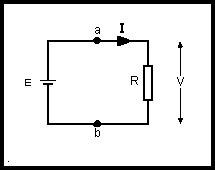Fig 2.1 is the simplest possible circuit, a current from a battery flows through R. The ratio of the voltage across the circuit to the current which flows though it is a constant:
![]()
which is known as the 'resistance' (R), and is the opposition to the flow of the electric current, while the relationship is known as 'Ohm's Law'; V is measured in volts and I in amperes; R is then in ohms.
It should be noted that in this circuit the current I also flows through the battery, which has an internal resistance r. Thus the EMF of the battery is the total voltage available to drive the current I through a total resistance of (R + r). The EMF is thus equal to (IR + Ir ). Some voltage is inevitably lost in driving the current through the battery itself. That which is left to do useful work is known as the 'potential difference' between the points a and b. The best battery is therefore one with the lowest internal resistance.

Fig 2.1. Simple DC circuit
The passage of an electric current through a resistance causes heat to be dissipated in the resistance. Thus electrical energy is converted into heat. The power dissipated in the resistance is:
power (watts) = voltage (volts) x current (amps)
W = V x I
By the use of Ohm's Law, the power dissipated in the resistance may be expressed in two other forms:
W = V2 / R and W=I2 x R
All materials have the property of resistance. In the case of metals suitable for use as conductors of electricity, eg copper (silver is better but is of course much more expensive), it is very low. Special alloys intended for heating elements are made with a very high resistance. Nichrome, for example, has a resistance which is about 60 times that of copper. Insulators are materials which have an extremely high resistance and therefore for all practical purposes do not conduct electricity. Some materials, eg germanium and silicon, have a resistance which is higher than that of conductors but is lower than insulators. These are known as 'semiconductors'.
The resistance of a conductor is proportional to its length and inversely proportional to its cross-sectional area. It also depends upon the material from which the conductor is made.
The 'resistivity' of a material is the resistance measured between the opposite faces of a 1cm cube of the material.